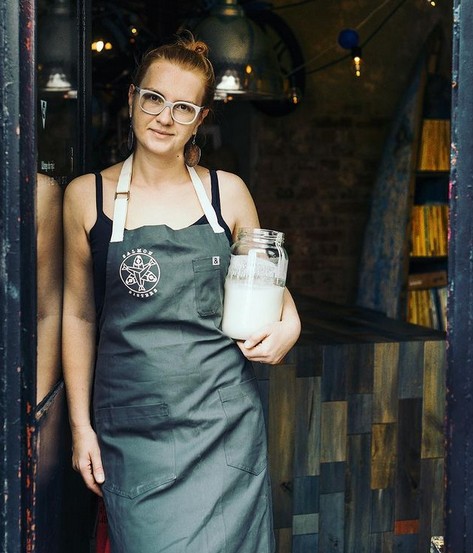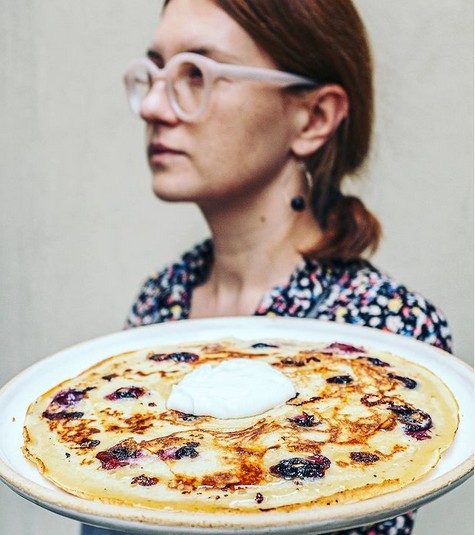Listen on Spotify
Hello
Welcome to Sourdough and stories beyond. I’m your host Mykola Nevrev. In each episode of this podcast I’m going to share a story to inspire you to have more empowering experiences in your life.
Let’s start with a story about Alaskan sourdough.
This is for sure one of my favorite sourdough stories that I’ve read from several different sources and each of them provided rich food for my imagination. Imagine brutally tired gold miners who were trying their best to keep their sourdough starter vital and alive by warming it up with their own bodies. Do you often hug your starter? Because they did.
The story goes back to the 19th century during the US gold rush, and I was first surprised + to read about this fascinating connection between gold seekers and sourdough. Why should these men, who were living in such harsh conditions for months and years, do something so demanding as sourdough baking?
Weren’t there any other sources of food available, that didn’t call for constant care, like sourdough starter? Why didn’t they use baking powder to make their bread rise instead?
The deeper I explored this topic, the more I understood why sourdough was such a thing during the Gold rush era. The answer is very simple. Flour as a commodity was easy to get and easy to transport. It provided plenty of calories and didn’t get spoiled too quickly. Okay, but then why sourdough in particular?
Well, it was really more of a long-term solution. In contrast to baker’s yeast, a sourdough culture could be maintained for years, while yeast was limited by use and quantity. Baking powder was an option, too, but back in the gold rush era, this powder was made with heavy reagents and consumption over long periods of time often caused gut problems. This was simply unacceptable for the men who were doing such physically demanding jobs, with the closest doctor many miles away.
Sourdough starters turned out to be much more sustainable. However, they were still hard to maintain and often became overly sour, as keeping the starter alive and vital in such a cold climate presented quite the challenge.
Can you believe that conversations about bread were very common between members of the gold seeking community? “How is your bread rising?” was as frequent a topic of discussion as the weather. Recipes were shared and the ability to master a good and light loaf of sourdough bread was highly praised within the community.
And yes, these tough men reportedly carried sourdough cultures in their pockets, with sourdough pots hanging around their necks. They spent nights with their starters under their blankets. Sounds very romantic in a way.

These days, they’re served as a breakfast treat, but they are a classic example of functional food. The pancake batter was made with sourdough starter and some sugar and was left to ferment.
Then it was mixed with baking soda that reacted with the acids from the fermentation, which decreased the sourness and also produced bubbles.
The dough was fried on iron pans over a fire and provided a quick and easy meal with high nutritional value. Pancakes or hot cakes were much easier and quicker to make compared to a traditional bread loaf, and the addition of the baking soda made the result more predictable and balanced the taste.
Over the years, the term Sourdough became a nickname for experienced prospectors, which was a point of pride too. An ability to bake in such a cold climate was a reminder of the resilience of those early gold seekers who managed to live and bake in the harsh Alaskan climate.
You can repeat this trick at home as these pancakes the great way to use sourdough discard.
Another product of the US gold rush is the famous San Francisco sourdough starter. The Gold rush started in Northern California before moving up to Alaska. Sourdough made its first appearance in this region and stayed in the San Francisco area creating a foundation for the strong sourdough traditions in this region. Scientists took a closer look at yeasts and bacteria living in a sourdough starter and despite some bugs that were typical of this region, didn’t find anything special.
However, some bakers claim that these starters contributed to the unique taste of the bread baked with it. People love stories and so San Francisco sourdough starter and Alaskan starter are baking super stars with millions of fans around the globe. You can easily order dried San Francisco starter online, restore it and become a part of this story yourself.
My personal encounter with Alaskan sourdough took place in Copenhagen last year where I was surprised to find the 120 years old starter in the place called Sex bakery and eatery. So if you are listening to this episode and also plan to visit Copenhagen bakeries, now you know where you can find the famous starter and try the famous Alaskan sourdough hotcakes.


Monika Pawlak and her Alaskan starter, source https://www.instagram.com/transeating
This episode was recorded in the beautiful downtown of Bratislava Slovakia.
You can find the text version on my website mykolanevrev.com
This episode was produced by Pilota creative. Original music by Mandy Jones.
I’m Looking forward to sharing another story in two weeks. Until then, don’t forget to hug your starter.
Sources:
Why Longtime Alaska Residents Are Called ‘Sourdoughs’
San Francisco’s Famous Sourdough Was Once Really Gross
Alaska sourdough: bread, beards and yeast
The diversity and function of sourdough starter microbiomes
What is the Microbiology of San Francisco Sourdough?
The world’s oldest sourdough?
